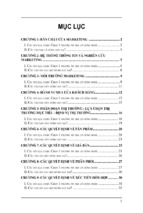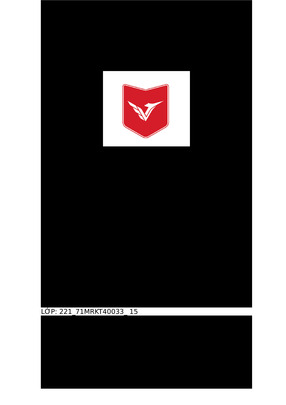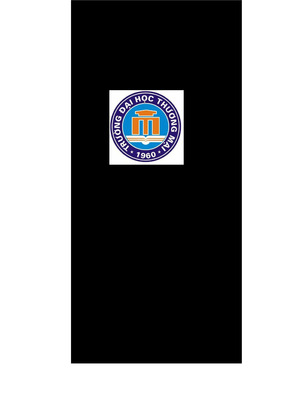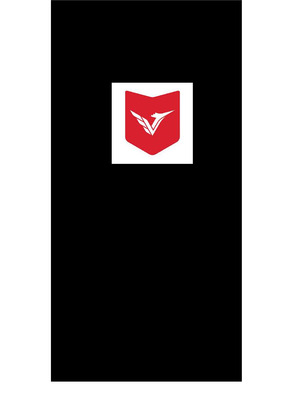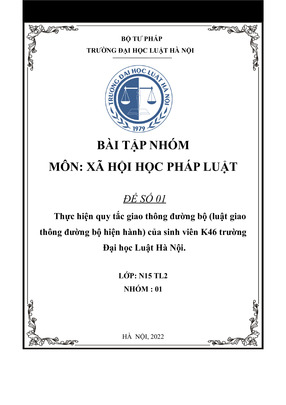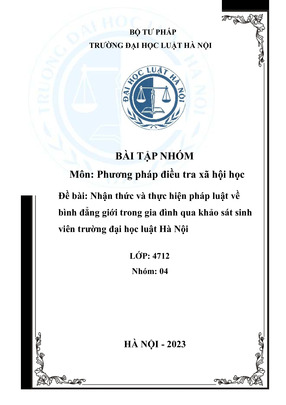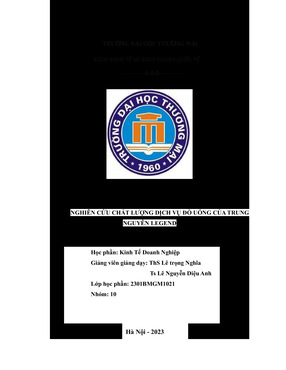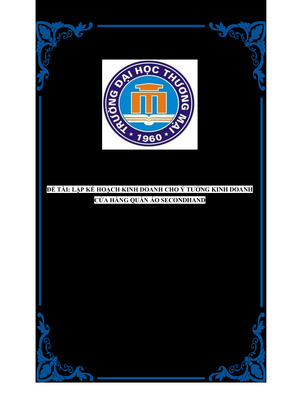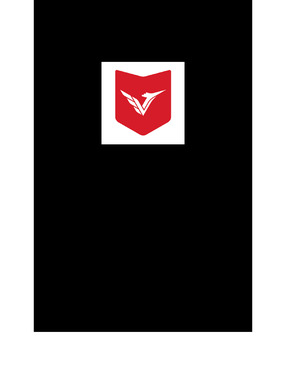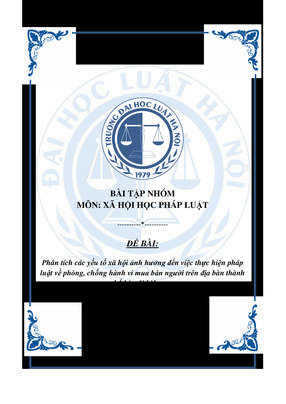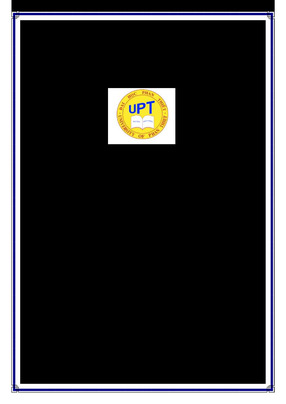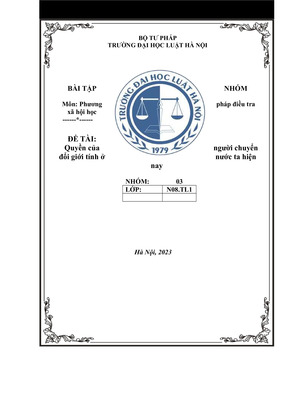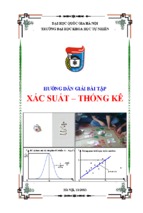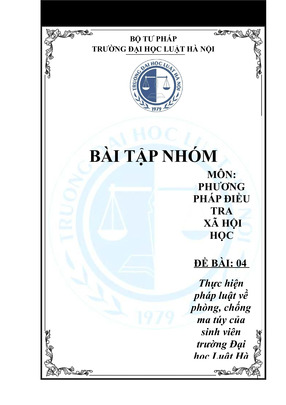PROJECT MANAGER’S
HANDBOOK
ABOUT THE EDITORS
DAVID I. CLELAND, PH.D., is currently Professor Emeritus in the School of
Engineering at the University of Pittsburgh. Internationally known as the “Father of
Project Management,” he is a Fellow of the Project Management Institute and the
author or editor of 38 books in the fields of project management and engineering
management, including Project Management: Strategic Design & Implementation,
now in its Fifth Edition; Project Manager’s Portable Handbook, now in its Second
Edition (both with Lewis R. Ireland); and Global Project Management Handbook,
all published by McGraw-Hill.
LEWIS R. IRELAND, PH.D., currently serves as President of the American Society
for the Advancement of Project Management. He is a Fellow of the Project
Management Institute and has over three decades of experience in the field of
project management. Dr. Ireland is the author of Quality Management for Projects
and Programs and coauthor (with David I. Cleland) of Project Management:
Strategic Design & Implementation, now in its Fifth Edition, and Project
Manager’s Portable Handbook, now in its Second Edition.
Copyright © 2008 by The McGraw-Hill Companies, Inc. Click here for terms of use.
PROJECT MANAGER’S
HANDBOOK
Applying Best Practices across Global Industries
David I. Cleland, Ph.D.
Editor
Professor Emeritus, School of Engineering
University of Pittsburgh
Pittsburgh, Pennsylvania
Lewis R. Ireland, Ph.D.
Editor
President
American Society for the Advancement of Project Management
Clarksville, Tennessee
New York Chicago San Francisco Lisbon London Madrid
Mexico City Milan New Delhi San Juan Seoul
Singapore Sydney Toronto
Copyright © 2008 by The McGraw-Hill Companies, Inc. All rights reserved. Manufactured in the United States of America. Except
as permitted under the United States Copyright Act of 1976, no part of this publication may be reproduced or distributed in any form
or by any means, or stored in a database or retrieval system, without the prior written permission of the publisher.
0-07-154271-X
The material in this eBook also appears in the print version of this title: 0-07-148442-6.
All trademarks are trademarks of their respective owners. Rather than put a trademark symbol after every occurrence of a trademarked name, we use names in an editorial fashion only, and to the benefit of the trademark owner, with no intention of infringement of the trademark. Where such designations appear in this book, they have been printed with initial caps.
McGraw-Hill eBooks are available at special quantity discounts to use as premiums and sales promotions, or for use in corporate
training programs. For more information, please contact George Hoare, Special Sales, at
[email protected] or (212)
904-4069.
TERMS OF USE
This is a copyrighted work and The McGraw-Hill Companies, Inc. (“McGraw-Hill”) and its licensors reserve all rights in and to the
work. Use of this work is subject to these terms. Except as permitted under the Copyright Act of 1976 and the right to store and
retrieve one copy of the work, you may not decompile, disassemble, reverse engineer, reproduce, modify, create derivative works
based upon, transmit, distribute, disseminate, sell, publish or sublicense the work or any part of it without McGraw-Hill’s prior consent. You may use the work for your own noncommercial and personal use; any other use of the work is strictly prohibited. Your right
to use the work may be terminated if you fail to comply with these terms.
THE WORK IS PROVIDED “AS IS.” McGRAW-HILL AND ITS LICENSORS MAKE NO GUARANTEES OR WARRANTIES
AS TO THE ACCURACY, ADEQUACY OR COMPLETENESS OF OR RESULTS TO BE OBTAINED FROM USING THE
WORK, INCLUDING ANY INFORMATION THAT CAN BE ACCESSED THROUGH THE WORK VIA HYPERLINK OR
OTHERWISE, AND EXPRESSLY DISCLAIM ANY WARRANTY, EXPRESS OR IMPLIED, INCLUDING BUT NOT LIMITED
TO IMPLIED WARRANTIES OF MERCHANTABILITY OR FITNESS FOR A PARTICULAR PURPOSE. McGraw-Hill and its
licensors do not warrant or guarantee that the functions contained in the work will meet your requirements or that its operation will
be uninterrupted or error free. Neither McGraw-Hill nor its licensors shall be liable to you or anyone else for any inaccuracy, error
or omission, regardless of cause, in the work or for any damages resulting therefrom. McGraw-Hill has no responsibility for the content of any information accessed through the work. Under no circumstances shall McGraw-Hill and/or its licensors be liable for any
indirect, incidental, special, punitive, consequential or similar damages that result from the use of or inability to use the work, even
if any of them has been advised of the possibility of such damages. This limitation of liability shall apply to any claim or cause whatsoever whether such claim or cause arises in contract, tort or otherwise.
DOI: 10.1036/0071484426
For more information about this title, click here
CONTENTS
Preface
xv
Acknowledgments
Introduction
xix
xvii
Part 1 Examples of Projects Found in Specific Countries
Chapter 1. Software and Other Project Management Practices in India
S. Srinivasan, Chinmay Jain and Bopaya Bidanda
1.1.
1.2.
1.3.
1.4.
1.5.
1.6.
1.7.
1.8.
1.9.
1.10.
1.11.
3
Introduction / 3
Mini Projects in the Corporate Sector / 4
Small and Medium-Sized Projects in the Government and Public Sectors / 5
Major Projects in the Corporate and Public Sectors / 6
Indian Venture Capital Industry / 8
Future Problems in Public Projects Execution / 11
Organizational Aspects in Indian Practice / 11
Project Management Practices and Issues in the Indian Software Industry / 12
Project Management Education in India / 20
Conclusion / 20
Acknowledgments / 21
Chapter 2. The Sydney 2000 Olympic Games Brian R. Kooyman and
Jonathan A. Shahady
2.1.
2.2.
2.3.
2.4.
2.5.
2.6.
2.7.
2.8.
2.9.
2.10.
Preamble / 23
History of Sydney’s Successful Bid for the 2000 Summer Olympics / 25
Objectives and Commitment of the Sydney 2000 Games / 26
The Early Days of Organizing the Games / 26
The Various Elements of the Project / 31
The Progression of Games Preparation and Managing Change / 36
Testing the Planning Theories, Commissioning, and Moving to Shutdown / 39
The Application of Project Management Principles to Delivering the Games / 41
The Outcome: A Successful Games! / 44
References / 44
Chapter 3. Project Management in Aotearoa (New Zealand) Stephen Harrison
3.1.
3.2.
3.3.
3.4.
3.5.
3.6.
3.7.
23
47
National Heritage / 47
Cultural Roadblocks to Project Management / 48
Practical Earned Value / 48
Stakeholder Management / 54
Results of Implementation / 59
Conclusion / 60
References / 60
v
vi
CONTENTS
Chapter 4. An Evaluation of Major Infrastructure Projects in France:
A “Project Finance” Perspective Professor Christophe N. Bredillet
4.1.
4.2.
4.3.
4.4.
4.5.
4.6.
4.7.
4.8.
4.9.
4.10.
Abstract / 61
Setting Up the Project Finance Scene / 61
Complexity of Project Finance / 62
Project Finance Categorizations / 65
A Case Study: The Eiffel Tower, One of the First Modern BOT/PPP / 68
BOT: A Trendy Model / 69
Two Different Approaches: French and Anglo-Saxon Models / 70
Delegation of Public Utility in France from the Middle Ages to the Present / 73
Conclusion: The Tent Metaphor / 74
Acknowledgments / 75
References / 75
Chapter 5. The Role of Project Management in Spanish Projects Alfonso Bucero
5.1.
5.2.
5.3.
5.4.
5.5.
5.6.
5.7.
5.8.
5.9.
5.10.
5.11.
Examples of Projects from Specific Environments
Chapter 6. Managing Projects Financed by International
Lending Agencies Robert Youker
97
Introduction / 97
What are International Development (ID) Projects? / 98
Problems in Managing ID Projects / 102
Conclusion / 105
References / 105
Chapter 7. Managing Transnational Projects Miles Shepherd
7.1.
7.2.
7.3.
7.4.
7.5.
7.6.
7.7.
7.8.
7.9.
77
Project Management in Spain / 77
The CG Project / 78
Customer Background / 78
Why Change was Needed / 78
The Project / 80
Difficulties / 82
The Process / 82
The Team / 86
The Results / 90
Summary / 92
References / 93
Part 2
6.1.
6.2.
6.3.
6.4.
6.5.
61
Introduction / 107
Outline of Issues / 108
Culture / 108
Leadership / 113
Communications / 116
Physical Aspects / 119
Conclusion / 122
Further Readings / 122
Web References / 122
107
CONTENTS
Chapter 8. Managing Projects in Health Systems Beaufort B. Longest
8.1.
8.2.
8.3.
8.4.
vii
123
Key Definitions and Concepts / 123
The Core Activities in Project Management / 126
Summary / 138
References / 139
Chapter 9. Managing International Project Management Training
Clayman C. Myers
9.1.
9.2.
9.3.
9.4.
9.5.
9.6.
9.7.
9.8.
Overview / 141
Bosnia and Herzegovina / 141
The Occupied Territories (Palestine) / 143
Ukraine / 146
Russian TOT Course / 147
Peoples Republic of China / 148
Macedonia / 149
Summary / 150
Chapter 10. Cross-Cultural Project Management on Major-Sized
Global Oil and Gas Plant Projects Hiroshi Tanaka
10.1.
10.2.
10.3.
10.4.
10.5.
10.6.
10.7.
10.8.
Project Management Government Organizations
Chapter 11. Elements of Successful Project Management at the National
Institute of Standards and Technology Thomas R. Rhodes
169
Introduction / 169
Nature of NIST Projects and Programs / 171
NIST Management and Projects / 173
Practical Considerations and Guidance for Effective Project Management / 175
Choosing and Justifying a Project / 180
Key Ingredients and Practices for Successful Projects / 181
Summary / 187
Chapter 12. Project Management Success at the Central
Intelligence Agency Sean E. O’Hara
12.1.
12.2.
12.3.
12.4.
12.5.
151
Introduction / 151
Value Chain of Oil and Gas Plant Projects / 152
Rationale of Joint Venture Project Organizations / 153
JV Management Structure / 156
Project Management Features / 160
Lessons Learned / 163
Acknowledgments / 165
References / 165
Part 3
11.1.
11.2.
11.3.
11.4.
11.5.
11.6.
11.7.
141
A Quick Overview of the Central Intelligence Agency / 189
Project Management Experience and Expertise / 192
Effective Stakeholder Management / 192
“Briefing Up”: Project Review Boards / 194
The Budget Cycle / 196
189
viii
CONTENTS
12.6.
12.7.
12.8.
12.9.
12.10.
12.11.
12.12.
12.13.
12.14.
Leadership and the Project Manager / 196
Communications / 197
Managing with a Project Schedule / 198
Lessons Learned / 199
Project Management Methodology / 200
Project Management Training and Certification / 201
Project Management Services / 202
Parting Words / 203
Acknowledgments / 204
Chapter 13. Strategies and Results in the Design and Implementation
of a Project Management Program for a State Government
Tim Jaques and Jonathan Weinstein
13.1.
13.2.
13.3.
13.4.
13.5.
13.6.
13.7.
13.8.
Introduction / 206
Leadership: Project Management Success Starts Here / 207
Project Management Organization and Structure / 211
Standards and Processes / 215
Training, Mentoring, and Certification / 219
Planning and Execution / 221
Summary / 225
Acknowledgments / 225
Chapter 14. Evaluating Project Management Effectiveness
of Boston Big Dig and Three Gorges Dam in China Young Hoon Kwak
14.1.
14.2.
14.3.
14.4.
227
Abstract / 227
Boston Central/Artery Tunnel Project / 227
Three Gorges Dam in China / 231
Acknowledgments / 235
References / 235
Chapter 15. Project Risk Management for Alaska Oil
and Gas Capital Projects Mike Fisher and Jang W. Ra
15.1.
15.2.
15.3.
15.4.
15.5.
15.6.
15.7.
15.8.
15.9.
15.10.
205
237
Abstract / 237
Introduction / 238
Sources of Project Risk / 240
Risk Analysis and Methodology / 242
Risk Management Planning / 242
Risk Identification / 246
Qualitative Risk Analysis / 248
Risk Response Planning / 253
Risk Register / 254
Conclusion / 264
References / 265
Part 4
Project Management Organizational Functions
Chapter 16. Legal Considerations in Managing a Nuclear Plant
Decommissioning Randall L. Speck
16.1. Introduction / 269
16.2. Background on Connecticut Yankee / 270
16.3. Project Characteristics and Legal Framework / 271
269
CONTENTS
16.4.
16.5.
16.6.
16.7.
Connecticut Yankee’s Reaction to Its Legal Framework / 274
Lessons Learned / 280
Conclusion / 282
References / 282
Chapter 17. Using Integrated Project Management to Improve
Outsourcing Strategy and Business Results Gregory A. Garrett
17.1.
17.2.
17.3.
17.4.
17.5.
17.6.
17.7.
17.8.
17.9.
17.10.
17.11.
17.12.
17.13.
ix
283
Abstract / 283
Introduction / 284
Integrated Project Management (IPM) Life Cycle (5 Phases) / 284
Case Study: NCR / 287
Case Study: Hewlett-Packard / 288
Case Study: Lockheed Martin / 288
Integrated Project Management (IPM) Life Cycle: Lessons Learned / 289
First Project Element: Customers’ Outsourcing Needs and Goals / 289
Second Project Element: Supplier Value Chain / 291
Third Project Element: Project Communications / 293
Fourth Project Element: Project Teamwork / 294
Fifth Project Element: Integrated PM Discipline / 295
The Integrated Project Management (IPM) Life Cycle and Model / 296
References / 296
Chapter 18. Connecting Projects to Corporate Strategy
Paul Varella and Kam Jugdev
18.1.
18.2.
18.3.
18.4.
18.5.
18.6.
18.7.
18.8.
Overview / 297
Introduction / 298
Strategic Management Process / 299
Crafting Winning Strategies / 301
Project Management Resources / 304
Project Management as a Core Competence / 308
Conclusion / 309
Bibliography / 310
Chapter 19. PMO Creation within Financial Services Companies Robert Chaves
19.1.
19.2.
19.3.
19.4.
19.5.
19.6.
19.7.
297
313
Introduction / 313
Genesis / 314
Mission / 316
Organizational Design / 317
Bricks and Mortar / 320
Professionalization of the PM Staff / 328
Project and Portfolio Optimization / 329
Chapter 20. The Evolution of Project Office and Portfolio Management
at American Modern Insurance Group, Cincinnati, Ohio
Mark Heitkamp and Lee Pinkerton
20.1.
20.2.
20.3.
20.4.
20.5.
Overview of American Modern Insurance Group / 332
Project Management Office Objective / 333
Project Office Certification / 335
Strategic Planning and the Project Portfolio / 335
Project Management Office Evolution / 336
331
x
CONTENTS
20.6.
20.7.
20.8.
20.9.
20.10.
20.11.
20.12.
Annual Planning Process / 338
Building and Evaluating the Portfolio / 342
Project Review Committee / 343
Project Prioritization / 344
The Art and Science of Project Management / 345
Importance of the Business Sponsor / 345
PMO Feedback and Lessons Learned / 347
Part 5
Remedial Projects
Chapter 21. A Faith-Based Response to Catastrophic Disaster:
An Overview of Southern Baptist Disaster Relief Planning
and Logistics in Hurricane Katrina Jim Burton
21.1.
21.2.
21.3.
21.4.
21.5.
21.6.
21.7.
21.8.
21.9.
21.10.
Introduction / 352
History of SBDR / 352
Beginnings of SBDR / 352
Organization of SBDR / 354
Pre-Katrina Landfall / 356
Post-Katrina Landfall / 358
Maintaining Recovery in Katrina / 359
Lessons Learned—Katrina Debrief / 360
Conclusion / 364
References / 364
Chapter 22. The Firefly Fiasco: A Case Study in
Project Management Failure Dr. Bud Baker
22.1.
22.2.
22.3.
22.4.
22.5.
22.6.
22.7.
22.8.
22.9.
22.10.
22.11.
367
Introduction / 367
On the Nature of Project Failure / 368
Birth of the Firefly Project / 368
The Failed Project Strategy: “Commercial Off-the-Shelf . . . Sort of . . .” / 369
Moving Ahead / 370
Testing / 370
The Fall of the Fireflies / 371
The Firefly’s Last Days / 371
Lessons for Project Managers / 372
Conclusion / 374
References / 374
Chapter 23. Lessons Learned Always Have a Price Tag Marty Burke
23.1.
23.2.
23.3.
23.4.
23.5.
23.6.
23.7.
23.8.
23.8.
23.9.
23.10.
23.11.
23.12.
351
Introduction / 375
Disasters in the Making / 375
Process and Rigor / 377
Defining the Methodology / 377
Benefits / 378
Structuring the Responsibility Matrix / 379
Testing Functionality / 379
Contractual Agreements / 379
Data Flow Road Map / 380
Progress Measurements / 380
The Hand-Off / 380
Summing Up / 382
Recognize and Manage the Risks / 382
375
CONTENTS
23.13.
23.14.
23.15.
23.16.
Risk Has Three Dimensions / 382
Vital Information / 383
Recommendations / 383
Success Is What You Make It / 384
Chapter 24. China’s Shenzhou Spaceship Project Xue Yan and Qian Fupei
24.1.
24.2.
24.3.
24.4.
24.5.
24.6.
24.7.
24.8.
385
Introduction / 385
Project Management Organization Structure / 387
Project Management System and Elements / 387
Project Management Processes / 392
Main Characteristics of Shenzhou Spaceship Project Management / 395
Shenzhou Spaceship Project Management Maturity Model / 400
Execution Outcomes of Shenzhou Spaceship Project Management / 402
References / 404
Part 6
The Theory and Practice of Project Management
Chapter 25. Project Management in Connection to Entrepreneurship
and Network Organizations Dr. Brane Semolic and Dr. Jure Kovac
25.1.
25.2.
25.3.
25.4.
25.5.
25.6.
25.7.
xi
407
Introduction / 407
Trends in Global Business / 408
From the Management Theories to the Praxis / 411
Network Organizations / 414
Case Study: Experience from Slovenia / 421
Conclusion / 424
Bibliography / 425
Chapter 26. Project Management Certification: Frequently Asked Questions
and Experiences of the Project Management Community Brigitte Schaden
427
26.1. Introduction: Project Management Certification / 427
26.2. Frequently Asked Questions about Project Management Certification / 428
26.3. Globalization’s Influence on Project Management Business and Its Affect on Project Management
Certification Market / 430
26.4. Frequently Asked Questions, II / 430
26.5. Project Managers: Certification and Public Image / 431
26.6. Reasons for Recruiting and Certifying Project Managers / 432
26.7. Correlation between Companies’ Aimed Improvements and Certified Project Management
Personnel / 434
26.8. Abbreviations and Annotations / 437
Chapter 27. The Chief Architect and the Art of Project Management
David Holyoke
27.1.
27.2.
27.3.
27.4.
27.5.
27.6.
Introduction / 439
The Essentials of Architecture / 440
A Model for Computer Systems Architecture / 441
The Software Development Life Cycle / 442
The First Step: Business Process Architecture / 443
A Case Study in Developing the Business Process Architecture / 444
439
xii
CONTENTS
27.7.
27.8.
27.9.
27.10.
27.11.
27.12.
27.13.
Moving Toward a More Technical View: Data Architecture / 445
Building the System: Applications Architecture / 447
Keeping the Lights On: Infrastructure or Technical Architecture / 449
Systems Architecture: Tying It All Together / 449
Help Wanted: Chief Architect / 450
An Architectural Approach for Project Management / 450
Conclusion / 452
Chapter 28. The Tao of Nimble Project Management:
A Real World Approach Donna Fitzgerald
28.1.
28.2.
28.3.
28.4.
28.5.
28.6.
28.7.
28.8.
28.9.
Introduction / 453
Phase 1: Envisioning the End Result / 455
Creating the North Star Vision / 455
Value Cube / 456
Phase 2: Creating an Initial Area of Order / 458
The Project Management Diamond / 471
Case Study / 473
Conclusion / 476
References / 476
Chapter 29. Advancing Project Management Professionalism
and Culture in Your Company Morten Fangel
29.1.
29.2.
29.3.
29.4.
30.6.
30.7.
30.8.
30.9.
30.10.
30.11.
30.12.
30.13.
30.14.
30.15.
477
Introduction: Twelve Instruments for Advancement Initiatives / 477
Improvements Are Requested But Challenging to Achieve / 478
Twelve Instruments for Advancing Management Projects / 479
Literature / 492
Chapter 30. Management by Project of the Fast-Growing Organization
in Dynamic Environment Sergey Bushuyev
30.1.
30.2.
30.3.
30.4.
30.5.
453
493
Introduction / 494
Modern Organization Development Models / 494
Universal Model of Organizational Development Projects and Programs Management / 496
Systems Model of Proactive Management of Organizational Development Programs / 499
Modern Tools of Goal Placement and Goal Achievement in Organizational Development
Project Management / 502
Modern Mechanisms of Proactive Organizational Development Program Management / 506
Trust-Forming Mechanisms in Organizational Development / 509
Information Assessment of Organizational Projects / 509
Notion of Information in Organizational Business Processes / 510
Information Flow in the Organization / 512
The Basic Law of the Information Organizational Management / 512
Pressure of Chaos / 514
Accuracy of Business Monitoring and the Capacity of Management / 514
Conclusion / 515
Literature / 515
Chapter 31. Project Management Using Earned
Value Management Wayne F. Abba
31.1. Introduction / 517
31.2. What Is EVM? / 517
517
CONTENTS
31.3.
31.4.
31.5.
31.6.
31.7.
31.8.
31.9.
31.10.
31.11.
Evolution of EVM / 518
Failure and Reinvention / 519
Global Interest in EVM / 520
Professional Associations and EVM / 520
Government Regulation and EVM / 521
Lessons Learned / 521
Key Elements / 522
Conclusion / 524
References / 524
Chapter 32. It’s a Long Road to Organizational Maturity John H. Scanlin
32.1.
32.2.
32.3.
32.4.
32.5.
32.6.
32.7.
xiii
Introduction: Background / 527
Make or Buy / 528
Decision Time / 529
A Major Misstep with a Happy Ending / 530
A Team Committed to Success / 531
Other Success Stories / 535
Summary / 536
Index
539
527
This page intentionally left blank
PREFACE
A significant body of book literature in project management has evolved over the last 50 years. This
body of literature addresses a wide variety of approaches reflected in paradigms, concepts, philosophies, techniques, processes, and strategies needed for use in managing projects.
In general, the existing books provide for a generic blend of the theory and practice of project
management with an emphasis on “how to do it” in the management of projects, and a few large integrated books designed for teaching in undergraduate and graduate project management courses in
universities, In recent years there has been a wave of short books whose focus has been on presenting summary prescriptions for “how to manage projects.” Many of these books have been on the “hot
topics” of the discipline such as The Project Office, Value Added Management, Portfolio Management,
and Project Leadership to name a few.
What is needed is a book that presents how project management is applied in the different
industries and environments in which the discipline is used. Of course many of the books deal with
project management in traditional applications such as the construction, defense, and aerospace
industry. Yet today, the application of project management as a philosophy and process for the management of change within contemporary organizations is spreading to nontraditional uses. Some of
the newer applications of project management include information technology, software engineering, health systems, organizational renewal and realignment, mergers and acquisitions, banking and
financial institutions, manufacturing, outsourcing management, and Federal, State, and local governmental units to name a few. What is needed in the field is a comprehensive book dedicated to the
presentation of paradigms for the application of project management in the many different contexts
in which it is found. Such a book does not exist. This book, Project Manager’s Handbook: Applying
Best Practices across Global Industries, is a “first of its kind” in the project management literature.
We believe that this book will set a trend whereby there will be more focus in literature on how
project management is applied in industries and governmental agencies. The study of actual application of project management techniques and practices will result in better results for projects and
greater productivity. The results of studying project management applications will be transferred to
teaching institutions for a better understanding of and education in the discipline.
David I. Cleland, Ph.D.
Lewis R. Ireland, Ph.D.
xv
Copyright © 2008 by The McGraw-Hill Companies, Inc. Click here for terms of use.
This page intentionally left blank
ACKNOWLEDGMENTS
Many people made this handbook possible from the initial idea through publication. Chapter authors
contributed their knowledge and experiences by preparing individual chapters and deserve special
recognition for sharing project management applications. We are deeply indebted to these chapter
authors.
Special thanks to Dr. Bopaya Bidanda, Chairman of the Industrial Engineering Department,
and Dr. Gerald D. Holder, Dean of the School of Engineering of the University of Pittsburgh, who
provided us with the needed resources and the intellectual environment to develop and produce
this handbook.
We deeply appreciate the many stakeholders in the project management community with whom
we discussed this book for their guidance and critique of the objectives and purposes that we planned
for this handbook.
Special thanks to Larry Hager, Senior Editor, McGraw-Hill Professional, whose insight of the need
for this book, and his patience during its creation, provided us with considerable encouragement.
We thank Lisa Dominiak of Clarksville, Tennessee, for her administrative assistance in preparing
and formatting material in the development process. Her help was especially valuable.
Finally, we acknowledge the people who use this handbook, and hope that they will find it a
valuable resource for the improvement of their project management competencies.
xvii
Copyright © 2008 by The McGraw-Hill Companies, Inc. Click here for terms of use.
This page intentionally left blank
INTRODUCTION
The project management people authoring chapters in this handbook are knowledgeable, experienced professionals who have written their chapters from the practitioner’s viewpoint. Where appropriate, experienced consultants and academics have been selected as contributors to the book. This
balance of perspectives from 14 countries gives readers insight into how the project management discipline which is applied across national boundaries in several industries.
The principal guiding criteria for the authors in preparation of chapters were: (1) light on the theory
and heavy on the practice of project management; (2) a description of the industry or environment
in which the discipline was practiced; (3) a citation of the “lessons learned” in the use of the project
approach; (4) a description of what could have been done differently in the management of the project;
and (5) how the cultural ambience of the stakeholder community was impacted by the use of project
management. The authors were given wide latitude in preparing their material and describing their
knowledge and experiences in the application of project management.
This book is organized into six parts as follows:
Part 1
Part 2
Part 3
Part 4
Part 5
Part 6
Examples of Projects Found in Specific Countries
Examples of Projects from Specific Environments
Project Management Government Organizations
Project Management Organizational Functions
Remedial Projects
The Theory and Practice of Project Management
Each part brings together for the reader the generally related topics and facilitates finding of specific areas of interest. Furthermore, it allows study of specific applications of project management in
different environments such as country, industry, and governmental agencies. It is anticipated that the
lessons learned in this book will be transferable across industry or agency lines to advance the application of project management practice. A brief outline of the parts and chapters follows.
Part 1 Examples of Projects Found in Specific Countries
Several National projects are described in this part from different countries in the world. These projects have been selected as being most representative of projects that have been undertaken to manage change in the societies involved. While there is a central theme of generic project management
in these projects, there are provincial characteristics to be found as well.
In Chapter 1, S. Srinivasan, Jain Chinmay, and Bopaya Bidanda examine the project management
practices and issues in the Indian Software Industry. India’s leadership position in the global offshore
Information Technology (IT) industry is based on several main advantages such as an abundant talented professional workforce, the creation of an urban infrastructure that has fostered several IT centers in India, the ability to provide operational excellence, and a continued growth in the domestic
IT sector. India faces major challenges in order to continue its dominance in the software industry.
The authors end their chapter with a description of the challenges that India faces.
In Chapter 2, Brian R. Kooyman and Jonathan Shahady describe the application of project management to the bid for and conduct of the 2000 Olympic Games in Sydney, Australia. The authors
include a summary of what was achieved for the games as well as other positive changes coming out
xix
Copyright © 2008 by The McGraw-Hill Companies, Inc. Click here for terms of use.

